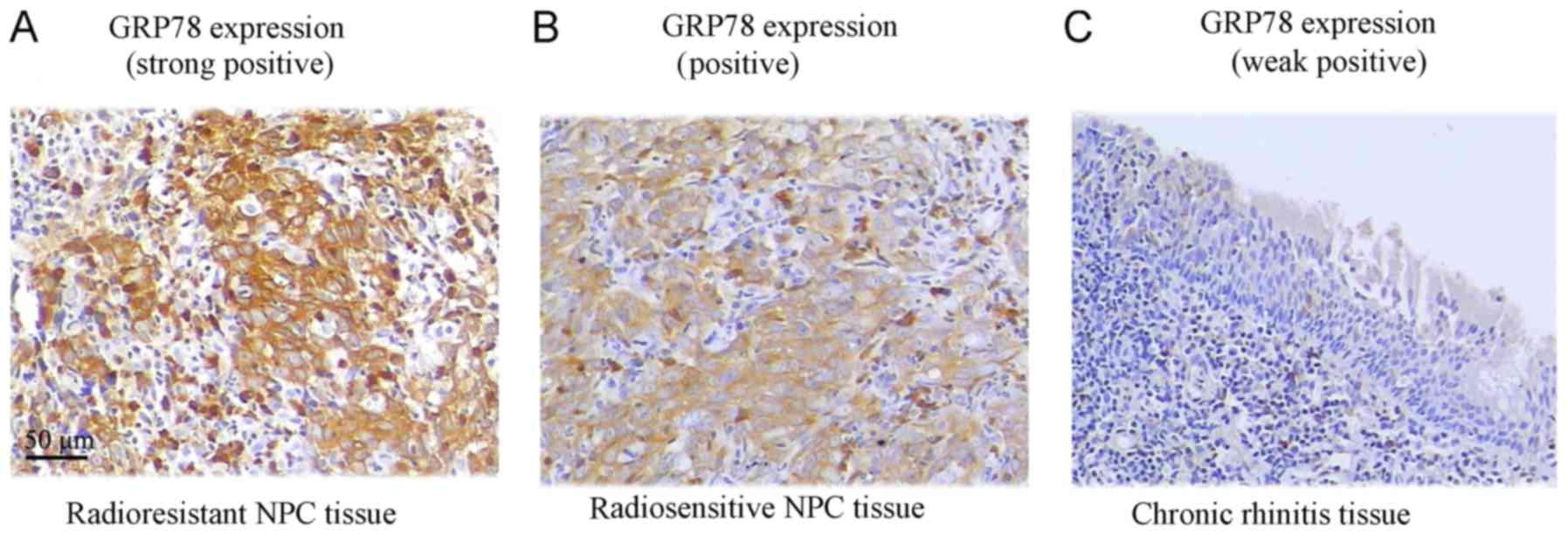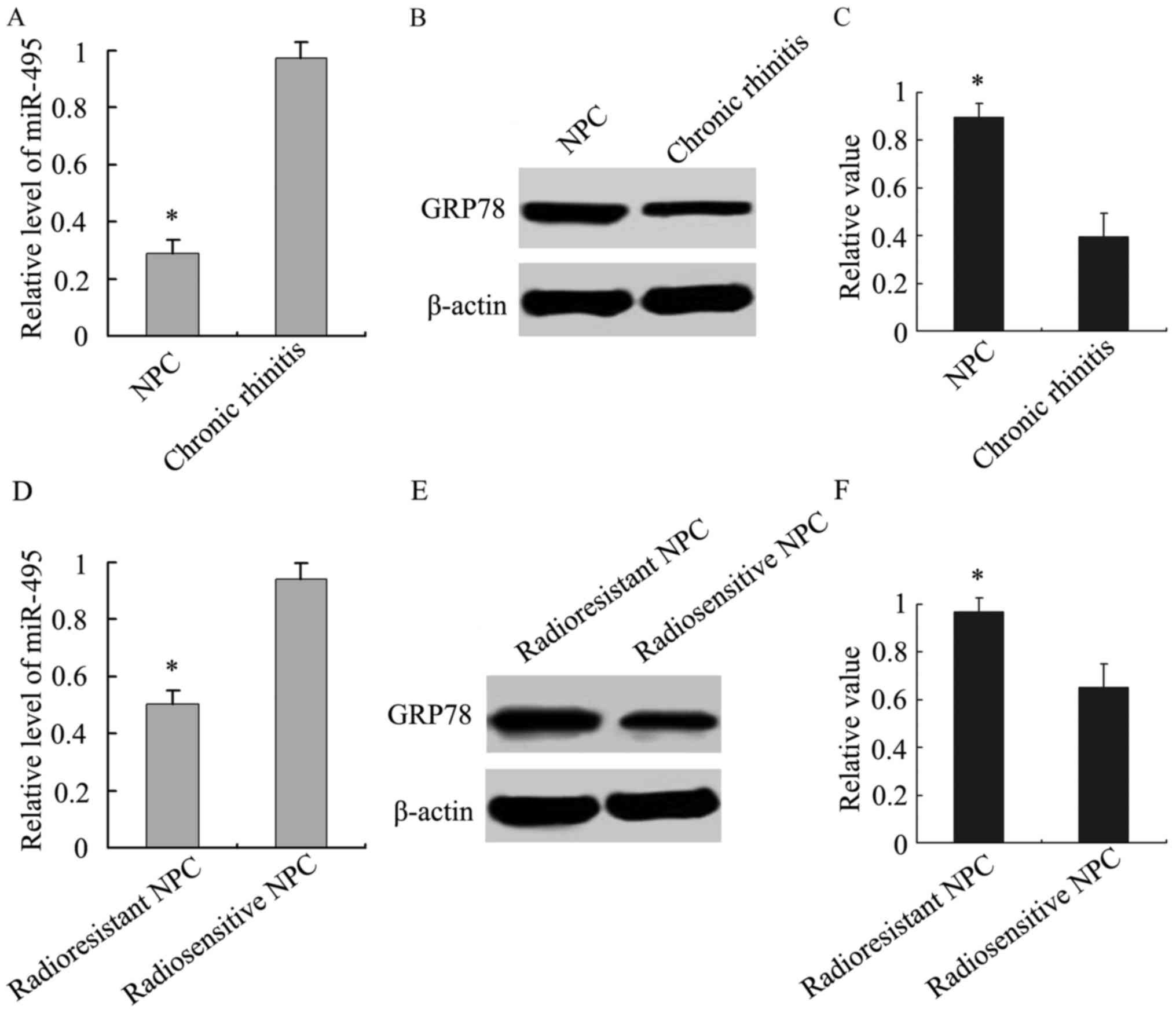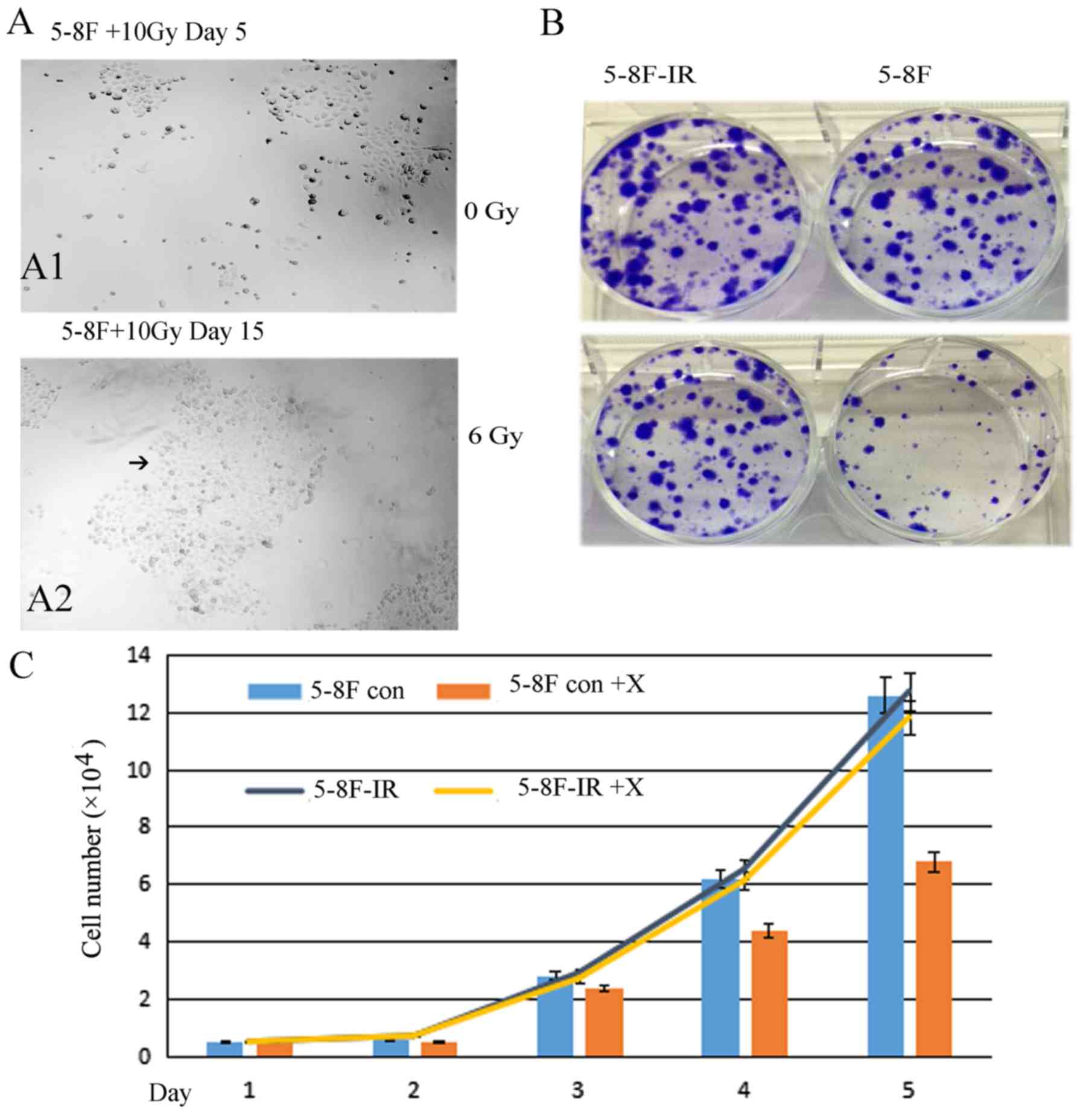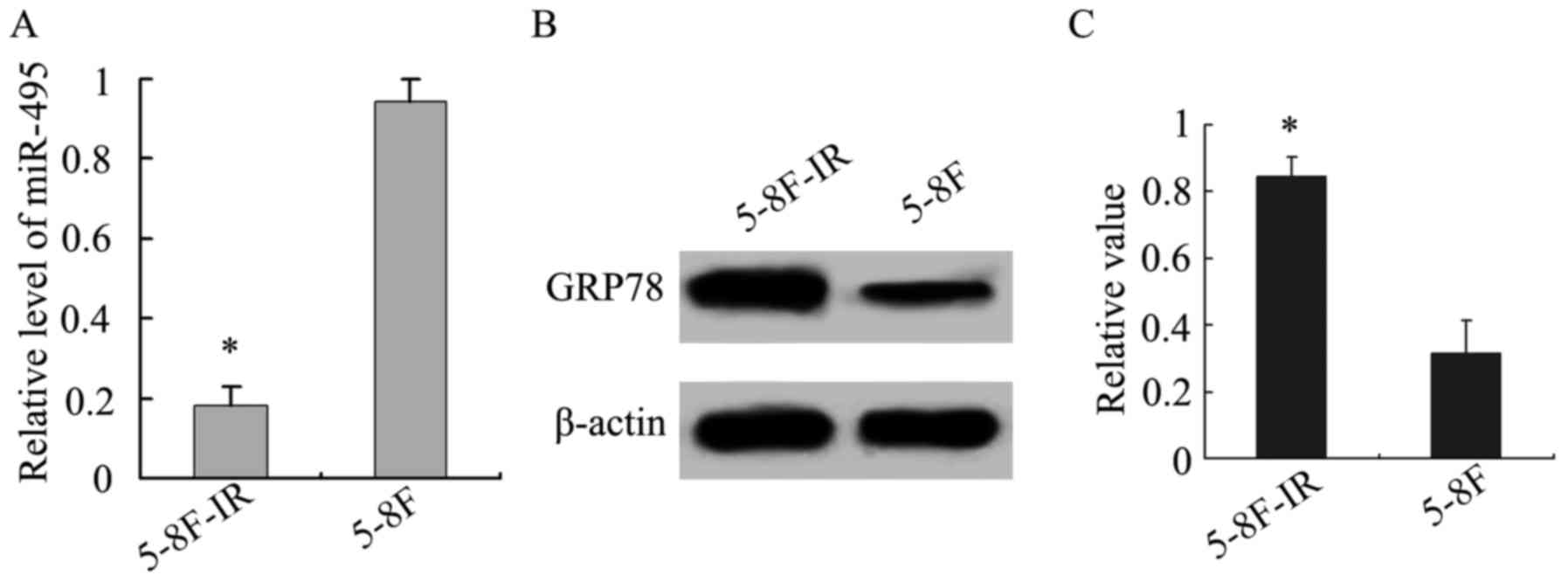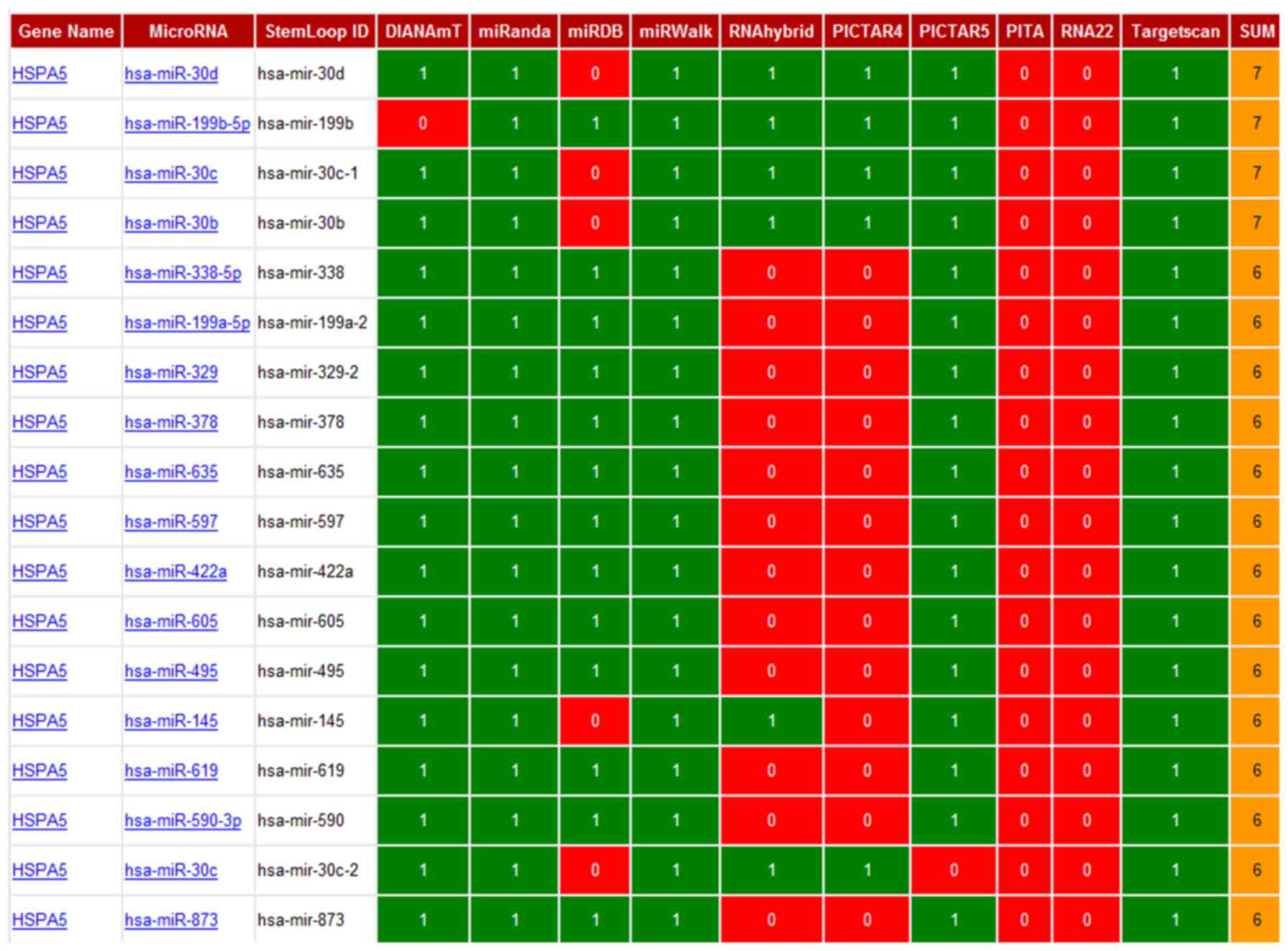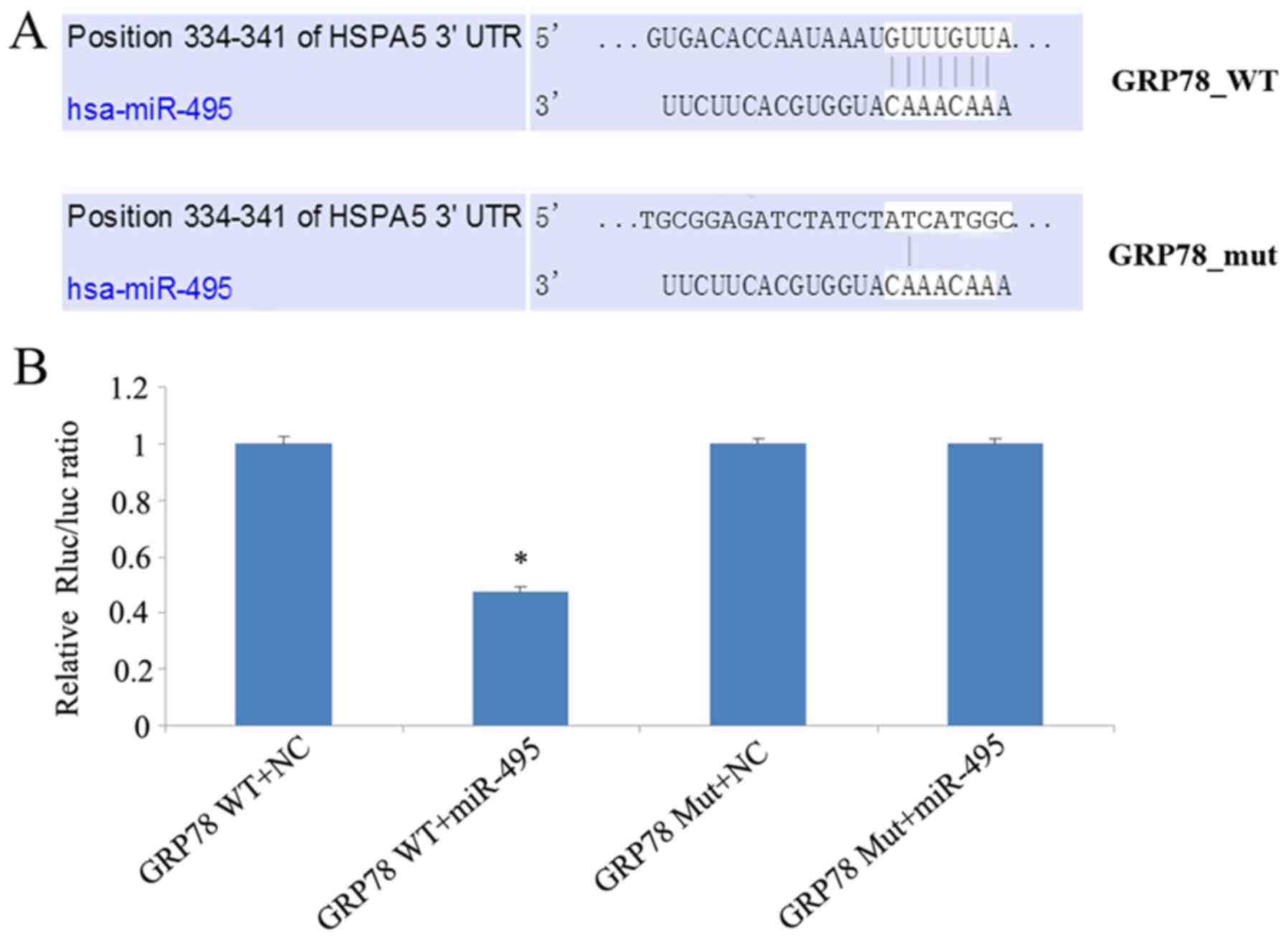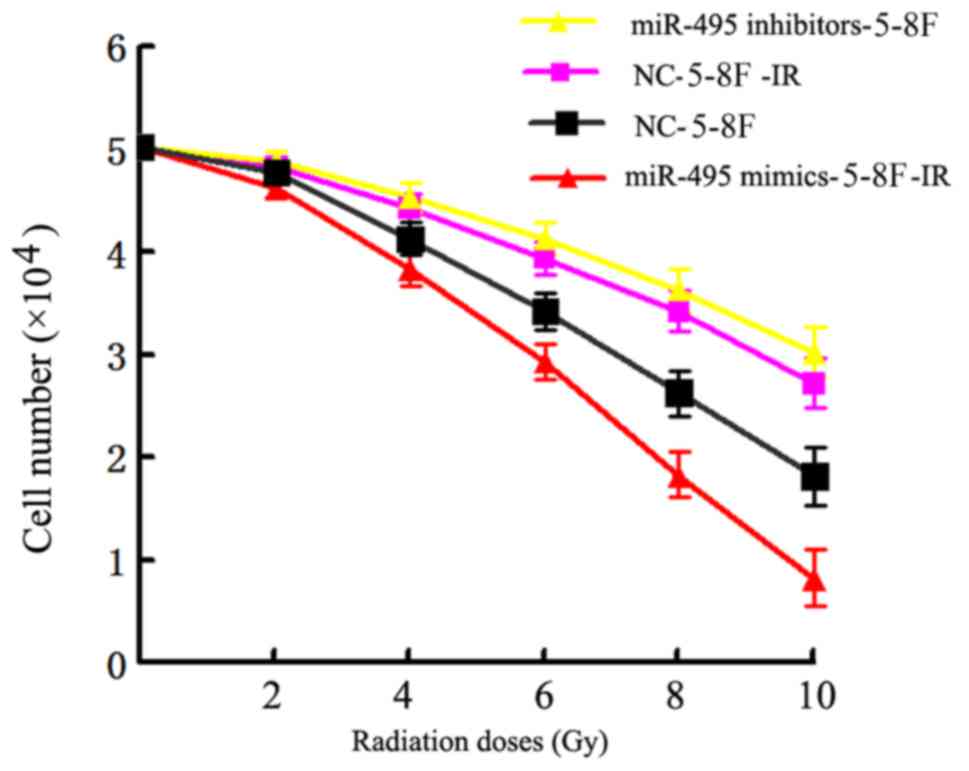|
1
|
Chen W and Hu GH: Biomarkers for enhancing
the radiosensitivity of nasopharyngeal carcinoma. Cancer Biol Me.
12:23–32. 2015.
|
|
2
|
Yi HM, Yi H, Zhu JF, Xiao T, Lu SS, Guan
YJ and Xiao ZQ: A five-variable signature predicts radioresistance
and prognosis in nasopharyngeal carcinoma patients receiving
radical radiotherapy. Tumour Biol. 37:2941–2949. 2016. View Article : Google Scholar : PubMed/NCBI
|
|
3
|
Yu YH, Xia WX, Shi JL, Ma WJ, Li Y, Ye YF,
Liang H, Ke LR, Lv X, Yang J, et al: A model to predict the risk of
lethal nasopharyngeal necrosis after re-irradiation with
intensity-modulated radiotherapy in nasopharyngeal carcinoma
patients. Chin J Cancer. 35:592016. View Article : Google Scholar : PubMed/NCBI
|
|
4
|
Feng XP, Yi H, Li MY, Li XH, Yi B, Zhang
PF, Li C, Peng F, Tang CE, Li JL, et al: Identification of
biomarkers for predicting nasopharyngeal carcinoma response to
radiotherapy by proteomics. Cancer Res. 70:3450–3462. 2010.
View Article : Google Scholar : PubMed/NCBI
|
|
5
|
Tian S, Chang W, Du H, Bai J, Sun Z, Zhang
Q, Wang H, Zhu G, Tao K and Long Y: The interplay between GRP78
expression and Akt activation in human colon cancer cells under
celecoxib treatment. Anticancer Drugs. 26:964–973. 2015. View Article : Google Scholar : PubMed/NCBI
|
|
6
|
Cook KL, Soto-Pantoja DR, Clarke PA, Cruz
MI, Zwart A, Wärri A, Hilakivi-Clarke L, Roberts DD and Clarke R:
Endoplasmic reticulum stress protein GRP78 modulates lipid
metabolism to control drug sensitivity and antitumor immunity in
breast cancer. Cancer Res. 76:5657–5670. 2016. View Article : Google Scholar : PubMed/NCBI
|
|
7
|
Zhao S, Li H, Wang Q, Su C, Wang G, Song
H, Zhao L, Luan Z and Su R: The role of c-Src in the invasion and
metastasis of hepatocellular carcinoma cells induced by association
of cell surface GRP78 with activated α2M. BMC Cancer. 15:3892015.
View Article : Google Scholar : PubMed/NCBI
|
|
8
|
Cook KL and Clarke R: Role of GRP78 in
promoting therapeutic-resistant breast cancer. Future Med Chem.
7:1529–1534. 2015. View Article : Google Scholar : PubMed/NCBI
|
|
9
|
Yu T, Guo Z, Fan H, Song J, Liu Y, Gao Z
and Wang Q: Cancer-associated fibroblasts promote non-small cell
lung cancer cell invasion by upregulation of glucose-regulated
protein 78 (GRP78) expression in an integrated bionic microfluidic
device. Oncotarget. 7:25593–25603. 2016.PubMed/NCBI
|
|
10
|
Li C, Zhang B, Lv W, Lai C, Chen Z, Wang
R, Long X and Feng X: Triptolide inhibits cell growth and GRP78
protein expression but induces cell apoptosis in original and
radioresistant NPC cells. Oncotarget. 7:49588–49596.
2016.PubMed/NCBI
|
|
11
|
He L and Hannon GJ: MicroRNAs: Small RNAs
with a big role in gene regulation. Nat Rev Genet. 5:522–531. 2004.
View Article : Google Scholar : PubMed/NCBI
|
|
12
|
Bartel DP: MicroRNAs: Target recognition
and regulatory functions. Cell. 136:215–233. 2009. View Article : Google Scholar : PubMed/NCBI
|
|
13
|
To EW, Chan KC, Leung SF, Chan LY, To KF,
Chan AT, Johnson PJ and Lo YM: Rapid clearance of plasma
Epstein-Barr virus DNA after surgical treatment of nasopharyngeal
carcinoma. Clin Cancer Res. 9:3254–3259. 2003.PubMed/NCBI
|
|
14
|
Shanmugaratnam K and Sobin LH: The World
Health Organization histological classification of tumours of the
upper respiratory tract and ear. A commentary on the second
edition. Cancer. 71:2689–2697. 1993. View Article : Google Scholar : PubMed/NCBI
|
|
15
|
Flodby P, Li C, Liu Y, Wang H, Marconett
CN, Laird-Offringa IA, Minoo P, Lee AS and Zhou B: The 78-kD
Glucose-regulated protein regulates endoplasmic reticulum
homeostasis and distal epithelial cell survival during lung
development. Am J Respir Cell Mol Biol. 55:135–149. 2016.
View Article : Google Scholar : PubMed/NCBI
|
|
16
|
Kureel J, John AA, Raghuvanshi A, Awasthi
P, Goel A and Singh D: Identification of GRP78 as a molecular
target of medicarpin in osteoblast cells by proteomics. Mol Cell
Biochem. 418:71–80. 2016. View Article : Google Scholar : PubMed/NCBI
|
|
17
|
Kuang XY, Jiang HS, Li K, Zheng YZ, Liu
YR, Qiao F, Li S, Hu X and Shao ZM: The phosphorylation-specific
association of STMN1 with GRP78 promotes breast cancer metastasis.
Cancer Lett. 377:87–96. 2016. View Article : Google Scholar : PubMed/NCBI
|
|
18
|
Gifford JB, Huang W, Zeleniak AE, Hindoyan
A, Wu H, Donahue TR and Hill R: Expression of GRP78, master
regulator of the unfolded protein response, increases
chemoresistance in pancreatic ductal adenocarcinoma. Mol Cancer
Ther. 15:1043–1052. 2016. View Article : Google Scholar : PubMed/NCBI
|
|
19
|
Zhang B, Han H, Fu S, Yang P, Gu Z, Zhou Q
and Cao Z: Dehydroeffusol inhibits gastric cancer cell growth and
tumorigenicity by selectively inducing tumor-suppressive
endoplasmic reticulum stress and a moderate apoptosis. Biochem
Pharmacol. 104:8–18. 2016. View Article : Google Scholar : PubMed/NCBI
|
|
20
|
Kaira K, Toyoda M, Shimizu A, Imai H,
Sakakura K, Nikkuni O, Suzuki M, Iijima M, Asao T and Chikamatsu K:
Decreasing expression of glucose-regulated protein GRP78/BiP as a
significant prognostic predictor in patients with advanced
laryngeal squamous cell carcinoma. Head Neck. 38:1539–1544. 2016.
View Article : Google Scholar : PubMed/NCBI
|
|
21
|
Nami B, Ghasemi-Dizgah A and Vaseghi A:
Overexpression of molecular chaperons GRP78 and GRP94 in
CD44hi/CD24lo breast cancer stem cells.
Bioimpacts. 6:105–110. 2016. View Article : Google Scholar : PubMed/NCBI
|
|
22
|
Dweep H, Sticht C, Pandey P and Gretz N:
miRWalk-database: Prediction of possible miRNA binding sites by
‘walking’ the genes of three genomes. J Biomed Inform. 44:839–847.
2011. View Article : Google Scholar : PubMed/NCBI
|
|
23
|
Dweep H, Gretz N and Sticht C: miRWalk
database for miRNA-target interactions. Methods Mol Biol.
1182:289–305. 2014. View Article : Google Scholar : PubMed/NCBI
|
|
24
|
Ahmadi A, Khansarinejad B, Hosseinkhani S,
Ghanei M and Mowla SJ: miR-199a-5p and miR-495 target GRP78 within
UPR pathway of lung cancer. Gene. 620:15–22. 2017. View Article : Google Scholar : PubMed/NCBI
|
|
25
|
de Jong MC, Ten Hoeve JJ, Grénman R,
Wessels LF, Kerkhoven R, Te Riele H, van den Brekel MW, Verheij M
and Begg AC: Pretreatment microRNA expression impacting on
Epithelial-to-mesenchymal transition predicts intrinsic
radiosensitivity in head and neck cancer cell lines and patients.
Clin Cancer Res. 21:5630–5638. 2015. View Article : Google Scholar : PubMed/NCBI
|
|
26
|
Shenoy AK, Jin Y, Luo H, Tang M, Pampo C,
Shao R, Siemann DW, Wu L, Heldermon CD, Law BK, et al:
Epithelial-to-mesenchymal transition confers pericyte properties on
cancer cells. J Clin Invest. 126:4174–4186. 2016. View Article : Google Scholar : PubMed/NCBI
|
|
27
|
Nishitani S, Noma K, Ohara T, Tomono Y,
Watanabe S, Tazawa H, Shirakawa Y and Fujiwara T: Iron
depletion-induced downregulation of N-cadherin expression inhibits
invasive malignant phenotypes in human esophageal cancer. Int J
Oncol. 49:1351–1359. 2016. View Article : Google Scholar : PubMed/NCBI
|
|
28
|
Zhang Z, Bu X, Chen H, Wang Q and Sha W:
Bmi-1 promotes the invasion and migration of colon cancer stem
cells through the downregulation of E-cadherin. Int J Mol Med.
38:1199–1207. 2016. View Article : Google Scholar : PubMed/NCBI
|
|
29
|
Petrova YI, Schecterson L and Gumbiner BM:
Roles for E-cadherin cell surface regulation in cancer. Mol Biol
Cell. 27:3233–3244. 2016. View Article : Google Scholar : PubMed/NCBI
|















